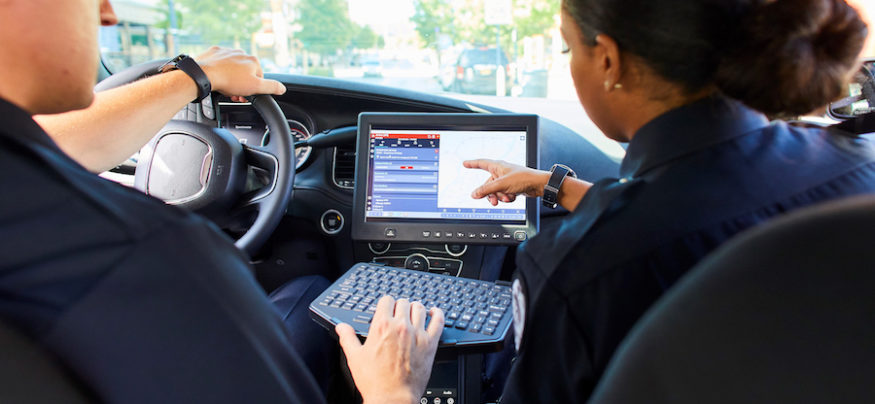With the ability of public safety to now truly leverage broadband wireless for mission-critical communications, the market is shifting from a focus on large, fixed infrastructure projects to a mobile-first approach. This shift recognizes the mobile nature of first responders and the need for the technology they use to be fully accessible in, and architected specifically for, this mobile environment. New mobile technology is also priced in way that can be operationalized to make usage more cost-effective and scalable.
The Transition to Mobile First
In the past, public safety has relied on expensive, capital intensive, private radio systems, such as TETRA, TETRAPOL and P25 for mission-critical voice communications. While these technologies have provided reliable narrowband communications, they have inherently limited the ability of public safety to leverage more modern broadband technologies. In addition, agencies have had to incur large capital expenditures in the millions and tens of millions of dollars to implement such capabilities, which have put significant pressure on agency budgets. As available federal grant programs continue to dwindle, more and more financial pressure on these agencies will come to bear.
During this same time, wireless broadband technologies, which due to the ubiquitous and commercial nature of such networks are significantly less capital intensive for public safety purchasers, have advanced significantly, particularly with the deployment of long-term evolution (LTE) cellular services, and the planned rollout of 5G. However, historically these networks were not architected specifically to provide the reliable mission critical communication capabilities public safety needs.
Until recently, public safety shared the same cellular networks with enterprise, commercial and other users without the ability to leverage priority and preemption capabilities, so in times of emergency or heavy use, the network would get throttled (data would slow down), and in some cases prevent calls from being completed and data from being exchanged. For a mobile emergency workforce that is reliant on the ability to communicate to save lives and protect property, such data throttling is simply unacceptable.
However, the advent of public safety-focused LTE networks has now solved this problem by prioritizing public safety traffic over all other traffic, ensuring public safety is always able to communicate without delay or impediment. These broadband networks also incorporate enhanced security and offer dedicated public safety applications designed for the needs of public safety. These will include, for example, mission-critical push-to-talk and peer-to-peer capabilities, situational awareness and mapping capabilities, and secured cloud-based communications platforms and records management, as well as new predictive analytics tools. These network upgrades have significantly changed the public safety communications landscape, enabling public safety for the first time to really leverage wireless cellular broadband networks for their mission-critical communications.
Within this new mobile-first environment, public safety has the ability to utilize the latest software and hardware capabilities and future upgrades through new “as a service” offerings, which also help to optimize annual operating expense budgets through the purchase of monthly or annual services plans. Other benefits include:
- the ability to scale user subscriptions based on need
- the distribution of costs on a monthly basis, resulting in more stable cash flows
- significant reduction in capital maintenance and upgrade costs, which are included in the monthly service fees
- built-in innovation and upgrades to software and technology without additional costs
This shift in purchasing represents a significant change that will have a positive impact on municipal budgets by reducing large capital expenditures and increasing the speed at which public safety is able to acquire new technology and capabilities — a win-win for both public safety and the communities they protect.
Samsung DeX — A Mobile-First Case Study
Several companies are taking advantage of this shift by offering new and innovative technologies enabling safer and more cost-effective agency operations. One extremely promising new solution is the Samsung DeX mobile computing platform.
Samsung DeX delivers mobile computing by pairing Samsung smartphones with a vehicle dash-mounted display and hardened keyboard. The Samsung smartphone and DeX can also be connected to a full-sized monitor, keyboard and mouse in the station environment. This replaces the legacy combination of phones, radios, expensive in-vehicle laptops and desktop computing facilities by effectively powering all of these functions from a single smart device.
Get the Samsung DeX Study for Public Safety
Download the Public Safety Network's in-depth cost comparison on Samsung's DeX in-vehicle solution. Download Now
Rather than carrying multiple computing devices and having to utilize in-station office desktops — each with a different user interface and experience, applications and stored data, and upgrade and maintenance cycle — the DeX platform empowers public safety to complete all operational computing functions using a single powerful smart phone in a true mobile-first environment.
The Public Safety Network was recently commissioned by Samsung to undertake a case study comparing the cost of a mobile-first approach utilizing Samsung DeX with traditional public safety communications and in-vehicle computing technology. Our analysis, which modeled an agency with approximately 1,800 personnel, demonstrated that in transitioning to a DeX solution, the agency could expect to realize savings of more than 20 percent in total costs over a three-year period.
A Unified Computing Experience
Taking this mobile-first approach benefits users by providing a single device that unifies workflows and computing experiences. First responders are one of the most mobile workforces and rely on their mobile devices to work anytime, anywhere to maximize their time spent in the field, providing assistance and lifesaving interventions as quickly as possible when emergencies occur.
Imagine being able to communicate, collect evidence, issue citations, complete and submit reports, all from the vehicle, enabling public safety to remain in the field, visible, accessible and ready to protect communities. That future is here, and companies like Samsung are providing these new capabilities to the public safety community in a true mobile-first fashion and with pricing that is affordable and allows for true scalability. Now that’s a win-win.
Learn more about the economic and operational benefits of mobile-first solutions like Samsung DeX for public safety in our free white paper, “Bringing Mobile First to Public Safety.”









